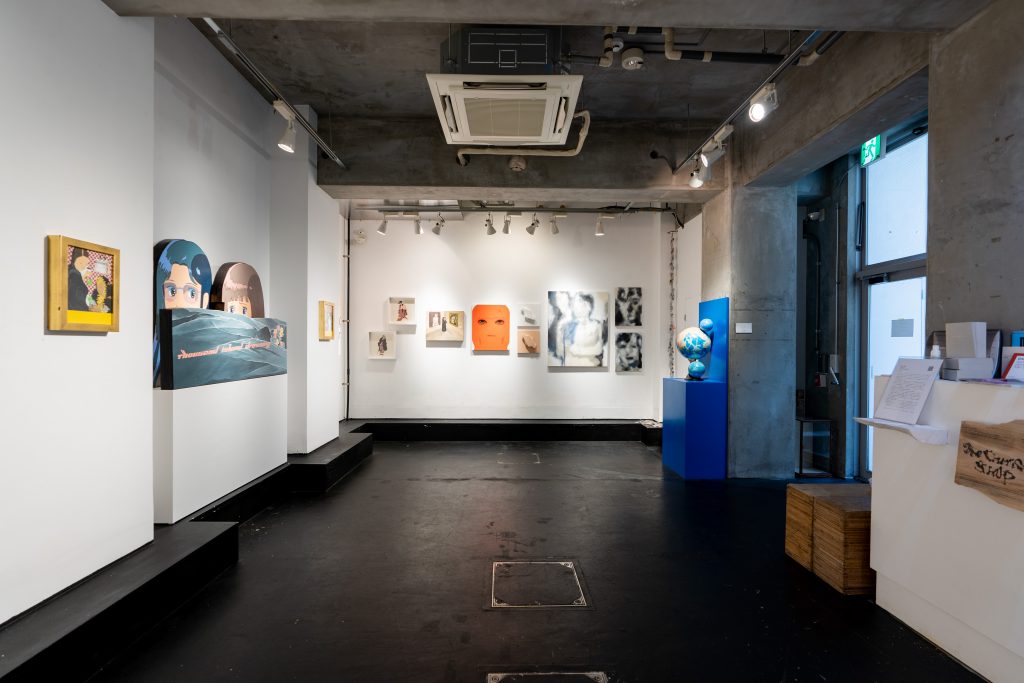
- ARAB NEWS
- 01 Jul 2025

I came to research exhibitions of UAE-based artists in Japan for an essay published earlier this year by the Dubai-based think tank Fiker Institute. As I somewhat expected, I found that only a few independent exhibitions showcasing the thriving UAE’s contemporary art scene have been held since Arab Express: The Latest Art from the Arab World,the latest major survey exhibition of contemporary Arab art held at Mori Art Museum in Tokyo in 2012.
Artists from the UAE, and indeed from the entire Gulf region, have not exhibited as widely in Japan as compared to in Europe and the U.S. This could be linked with the 21st global contemporary art framework, in which the UAE’s many art institutions prioritize Western sensibilities and institutional recognition for artists from their region. The lack of Arab artists exhibiting in Japan also comes from thin local knowledge of contemporary art from Arab World. From my interactions with artists and curators based in Tokyo, few are aware of the contemporary art scenes of Abu Dhabi, Dubai, and Sharjah. As research for the Fiker Institute has shown, there are also very few professors dedicated to the study of the Arab modern and contemporary art in Japan, which adds to the Japanese lack of interest to art produced in this region.
As the UAE and Japan celebrate 50 years of diplomatic relations, a large showcase of contemporary art from the UAE artists in Japan is more important than ever. Artists from the UAE are eager to exhibit in Japan, and new art festivals and gallery spaces in Japan are open to the idea of exhibiting international artists especially from the Gulf region.
Last year, I collaborated with 15 artists for the fourth volume of the “East-East: UAE meets Japan” exhibition series held in Tokyo. As the exhibition was self-financed, I prioritized emerging artists and DIY-spirit curation. Artist-run spaces and art gallery basements were my terrain to showcase a myriad of works that were shipped by DHL straight from Abu Dhabi and Dubai to Tokyo. Alongside the works of promising Japanese artists – many of whom I had met during my studies at Tokyo University of the Arts – paintings, objects, and sculptures were exhibited in what I hoped to be a Curio Shop, a hodgepodge of influences, colors, cross-cultural dialogues, trading on ideas of the “exotic.” Throughout the process, a number of artists, curators, and creative practitioners have shared with me their wish to travel to Tokyo. More and more artists are hoping to complete residencies in Japan, while the idea to bridge Japanese and Emirati popular culture is gaining traction especially with younger Emirati artists.
This year, I’m curating the fifth volume of “East-East” as part of Atami Art Grant’s annual art festival in “ACAO SPA & RESORT” a historical 17-floor hotel built in 1973 in Atami, a seaside town just south of Tokyo. With public and private support, Atami Art Grant is part of Project Atami, a multi-venue art activation project to revive the city of Atami in Shizuoka prefecture. Sustainability and simulation indeed emerge as themes this year: how do artists simulate natural and man-made environments, and how can they do so with sustainable means? Not only is the finished artwork important, but a focus on the research process will be at the heart of these two exhibitions.
As the UAE and Japan celebrate 50 years of diplomatic relations, a large showcase of contemporary art from the UAE artists in Japan is more important than ever.
Sophie Mayuko Arni
Visiting the incredible ACAO Resort reminded me instantly of palaces, foundations, and majlis structures built in pre-2000s in the UAE. Innovative use of materials, best sustainable practices, and poetic photographs of the UAE’s rapid transformation can resonate with the town of Atami, which is itself in the process of transforming itself after its tourism industry has been hit by the pandemic. The story of Atami as a dormant tourist attraction, with reference to its glorious resort destination status, can be one that resonates with the UAE’s architectural developments. One never wonders about the lifespan and futures of large hotel resorts on the UAE’s shores, but ACAO Resort with Atami Art Grant and Project Atami, can be a source of inspiration for the future of these structures.
Sustainability emerges as the luxury, and I think Japan and the UAE are particularly well-positioned to speak to it. More nuanced stories need to be told to bridge these two superpowers of the “East,” and perhaps the job of the curator is to find bridges where no one can see them, to materialize artists’ ideas in new spaces and educate audiences at the same time.